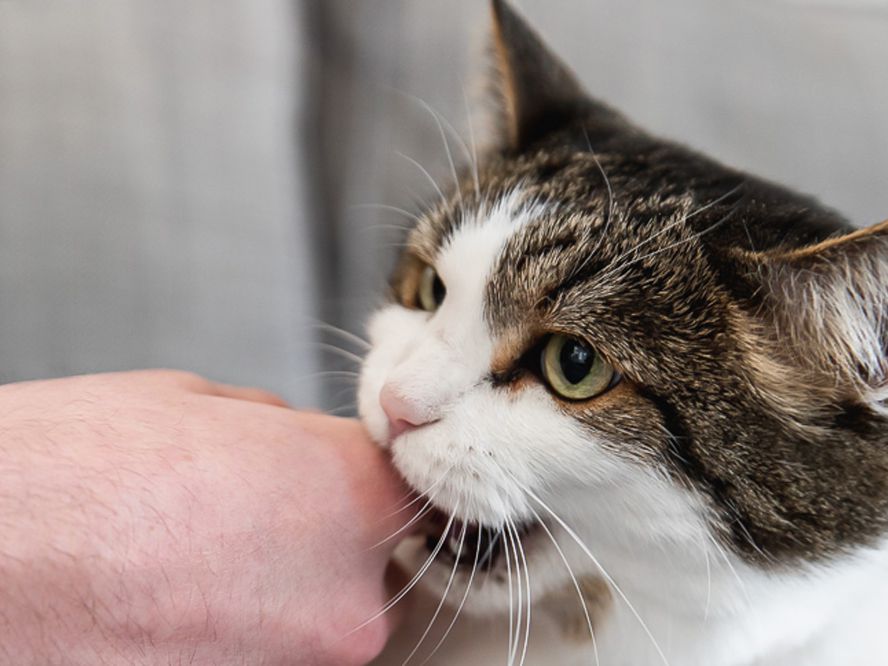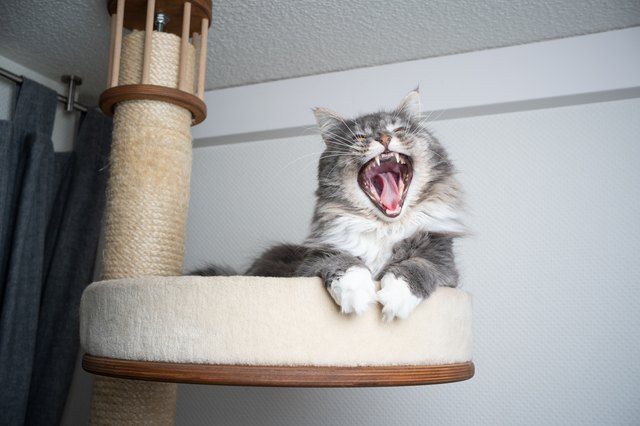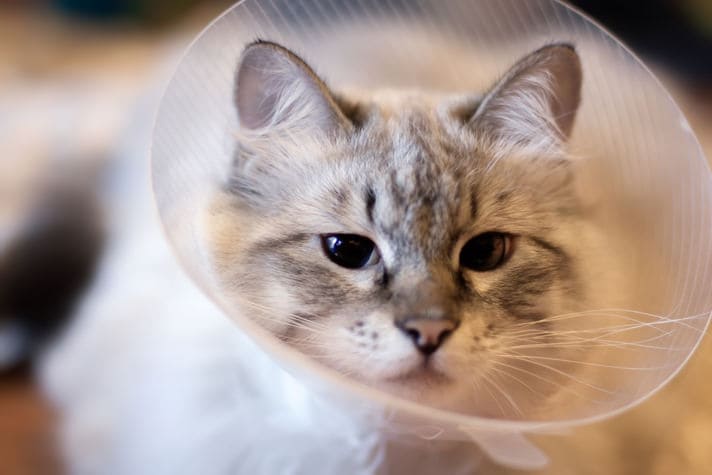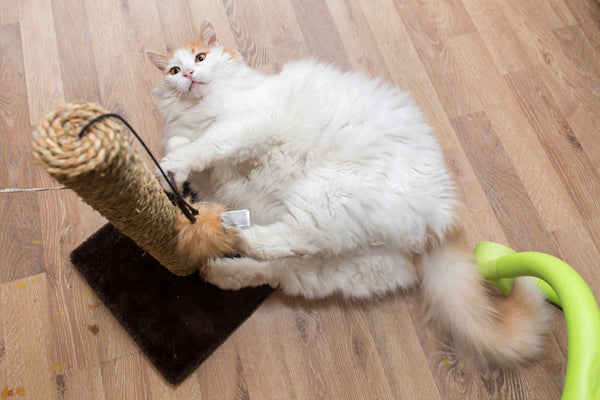Cats are beloved pets, but their scratching and biting tendencies may be inconvenient for their owners. Cats scratching their owners’ faces is one of the most common complaints. You’re not alone if you’re struggling to stop your cat from scratching your face.
With the appropriate method, however, you can teach your cat to cease this behavior and enjoy a happy and healthy relationship with your furry buddy.
Understanding cat behavior is critical to solving this problem. Cats are complex creatures, and understanding their inherent instincts and behavior patterns is essential for efficient training. Scratching is an instinctive habit used by cats to sharpen their claws, establish their territory, and release tension.

So, you must first understand why before you can stop your cat from clawing your face. Once you’ve identified the underlying reason for the behavior, you can make efforts to fix it.
Below are six ideas to help you stop your cat from scratching its face, including why cats scratch and practical remedies to help you train your cat. You may assist your cat in overcoming scratching and biting behaviors by understanding their behavior and giving them the appropriate tools and resources.
Check out the practical advice and tips on how to stop a cat from scratching your face and how to improve cat behavior:
Tip 1: Don’t show any aggression

It is essential to remember that displaying aggressive behavior towards your cat yourself could make the situation even more difficult. This will help when training it to stop this behavior.
It is crucial to keep your temper in check. Hitting, screaming at, or otherwise scolding your cat can cause it to get confused and result in an unfavorable reaction. Instead, make an effort to address the circumstance with an attitude that is calm and tolerant.
Keep in mind that your cat is not scratching you out of spite. It’s unlikely that it’s trying to test your patience; instead, they engage in natural behavior. You may lay the groundwork for successful instruction by grasping this and confronting the predicament with empathy and love.
Tip 2: Do your best to understand their behavior

Understanding your cat’s behavior is vital to solving the problem of scratching. For instance, if your cat bites when being stroked, it may be attempting to communicate with you that it doesn’t enjoy the experience.
In addition, keep in mind that pregnant cats, moms, or pets with an illness may be more aggressive than others. Therefore, it is essential to consider these circumstances when attempting to comprehend your cat’s behavior.
You may better understand why your cat is scratching by monitoring your cat’s behavior and paying attention to the situations surrounding their scratching. This will allow you to discover a satisfactory solution for you and your cat.
Tip 3: Distract them with fun and exciting toys

Consider giving your cat some toys to play with if you notice they are bored and acting out by scratching or biting. Please provide them with distractions such as strings, toy mice, or light-up lasers to prevent them from scratching or biting themselves.
Playing with them in this manner will also enable you to keep a safe distance from them, minimizing the risk of injury. Playing with your cat is an entertaining way to divert their attention and contributes to developing a closer relationship between you.
Keep in mind that just like people, cats require mental stimulation and entertainment to live a happy and healthy life.
Tip 4: Consider neutering or spaying

You might think about having your cat spayed or neutered if you want to prevent your cat from engaging in territorial behavior.
According to research, unaltered cats tend to be more possessive of their territories, but spayed, or neutered cats can help stop these annoying behaviors. Spaying or neutering your cat has a variety of positive effects on their health, in addition to reducing any aggressive territorial tendencies they may have.
Scratching and biting can be reduced thanks to this approach, which is both easy and practical to implement.
Tip 5: Introduce strategically-placed scratching posts

The positioning of scratching posts is an important consideration. You should position the scratching post in an area where your cat already enjoys scratching.
For instance, if your cat enjoys scratching the sofa, position the scratching post adjacent to the couch. Play with your cat around the post while using a fishing rod toy or a laser light to ease its transition into the new environment.
Applying catnip on the post for the first few days will entice your cat to inspect and keep it interested. Remember that your cat needs to learn that scratching the scratching post rather than your furnishings is the preferable option.
Tip 6: Make the scratching target less desirable

While your cat is learning to use the scratching post, making the objects they previously liked to scratch less desirable is crucial. This will help them learn to utilize the scratching post.
Covering the furniture in a sheet that is snugly fitted is the method that is both the easiest and most effective to implement. This sheet will provide a different level of satisfaction when scratched as the post is wrapped in sisal. You can use double-sided sticky tape or any other item to make the object’s surface sticky, smooth, or slippery for working with smaller surfaces.
When you notice that your cat is using the scratching post regularly, you can remove the covering from the items it used to scratch.
Final Thoughts
Preventing and ending cat scratching on your face is a procedure that involves knowledge of cat behavior, patience, and persistence. Remember to get medical assistance if you have been scratched or bitten. If your cat is biting excessively, this could indicate an underlying health problem, so consult your veterinarian.
Keep your kitten’s nails clipped and offer them scratching posts and other appropriate surfaces. This will assist them in determining where they may and cannot scratch.
You may train your cat to quit scratching your face by following these instructions, being patient and consistent, and having a happy and healthy relationship with your furry pet. It is important to remember that training takes time and work. Still, with the appropriate approach, you can help your cat overcome their scratching and biting behaviors and create a loving and calm atmosphere for you and your feline partner.
Further Reading




